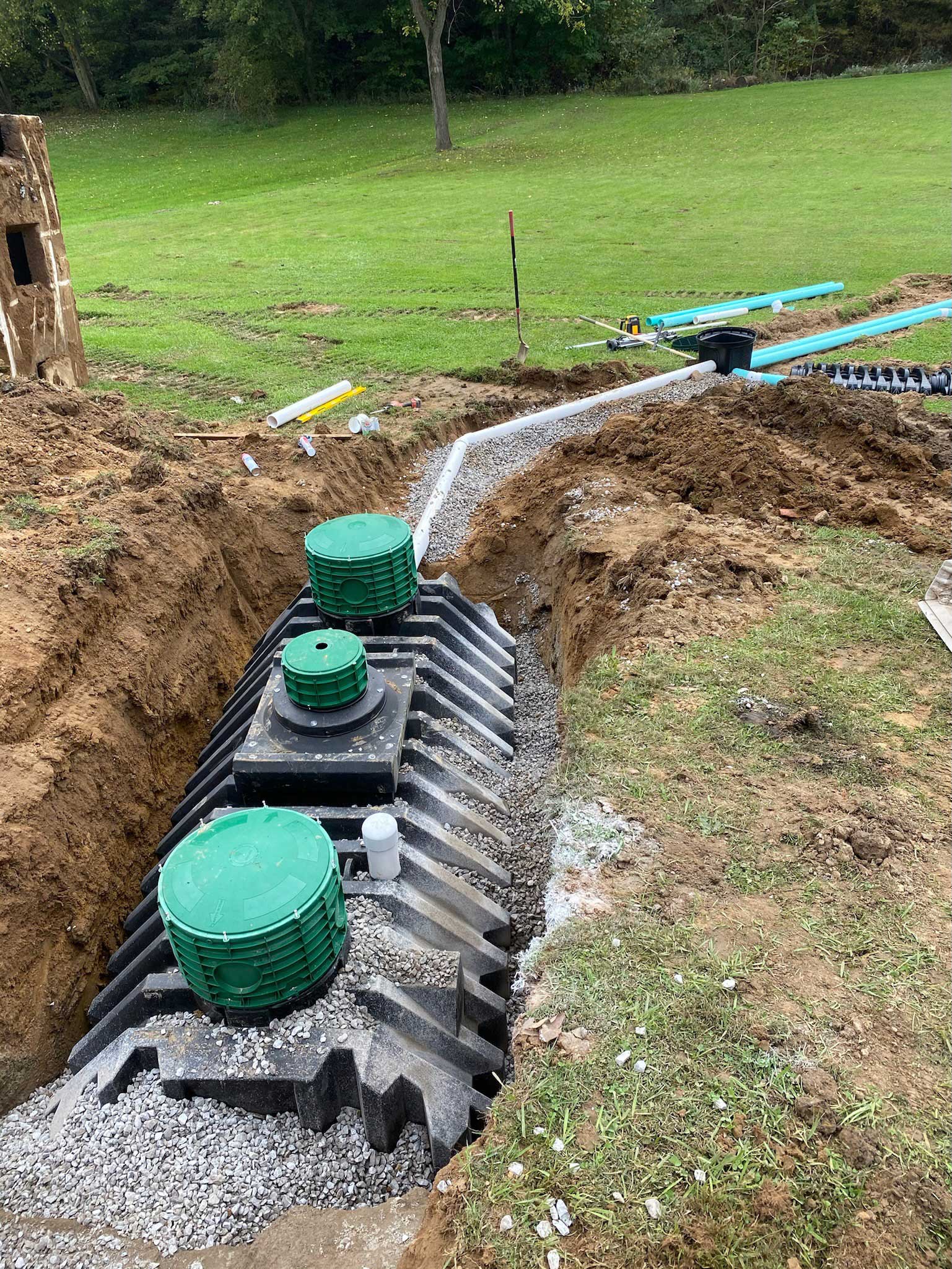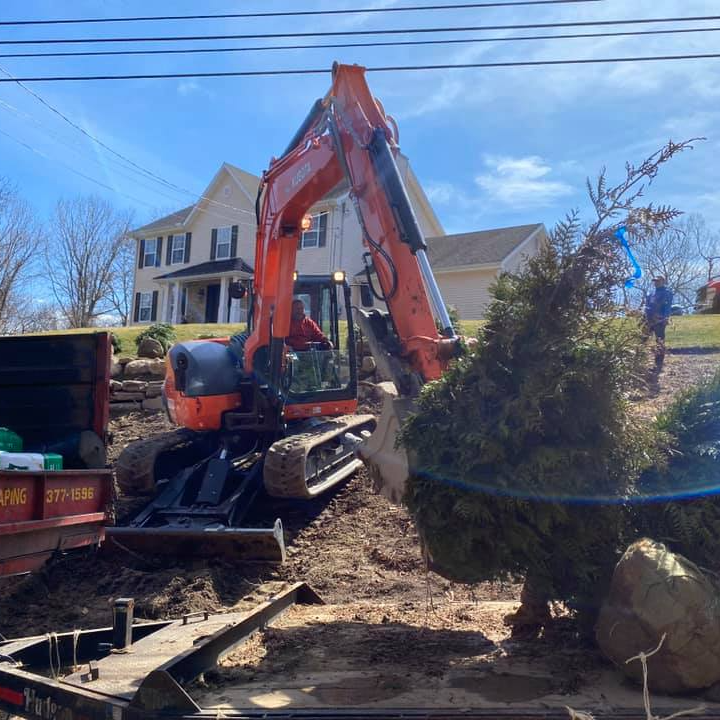Residential Excavating Ohio - Specialized Excavation for Ohio Residences
Residential Excavating Ohio - Specialized Excavation for Ohio Residences
Blog Article
Unveiling the Art of Excavation: Pro Tips for Safe and Productive Excavating
In the world of excavation, the proficiency of efficient and secure excavating is an art type that calls for knowledge, precision, and adherence to well established practices. As soil is turned and planet is moved, the ins and outs of excavation expose themselves, requiring a keen understanding of tools, soil composition, safety methods, and environmental considerations. The knowledge required to navigate these aspects efficiently can indicate the difference in between an effective excavation job and a possible calamity. By deciphering the layers of this detailed procedure, a world of strategies and insights awaits those seeking to boost their excavation skills to new heights.
Importance of Appropriate Equipment
To make certain the security and efficiency of any kind of excavation project, using the proper equipment is paramount. Excavation projects vary in scope and complexity, varying from small residential landscaping work to massive building and construction tasks.
Excavators are fundamental pieces of machinery in any kind of digging procedure. These flexible devices come in numerous dimensions to match various job needs. Tiny excavators are suitable for smaller jobs, while bigger excavators take on much more considerable jobs effectively. Backhoes are an additional essential equipment kind, combining the functions of a loader and an excavator in one equipment. They are beneficial for jobs calling for versatility and ability to move.
Excavators excel in tasks that require pressing large quantities of dirt or debris. By investing in the appropriate equipment, excavation jobs can be completed safely, on time, and with precision.
Comprehending Dirt Structure
A thorough grasp of soil composition is essential for carrying out excavation tasks with accuracy and safety. Comprehending the different types of soil is critical as it directly affects excavation approaches, tools option, and overall project efficiency.
Sand fragments are the biggest and give good drainage but use little communication. Silt particles are smaller sized than sand yet bigger than clay, using moderate drainage and cohesion. Clay fragments are the tiniest and offer high cohesion but inadequate drain. Raw material, such as decaying plant product, influences soil fertility and stability.
Before commencing excavation, conducting soil tests to determine its composition and qualities is necessary. This details assists in selecting the appropriate equipment, carrying out safety and security measures, and developing excavation strategies tailored to the particular soil problems - septic ohio. By comprehending dirt make-up, excavation specialists can boost project results while guaranteeing security and adherence to ideal methods
Precaution and Procedures
Comprehending dirt composition is the cornerstone whereupon security measures and procedures for excavation jobs are constructed, making certain the health of workers and the success of the venture. When it comes to security throughout excavation, there are numerous crucial actions that have to be applied to mitigate threats and avoid mishaps.
Most importantly, before any kind of digging starts, a detailed examination of the website should be conducted to recognize any prospective hazards such as underground energies, unsteady soil conditions, or close-by structures that could pose a risk. It is critical to have a qualified individual supervise the excavation process to guarantee that all safety methods are complied with purely.
Moreover, all workers entailed in the excavation should be properly visit our website educated in secure digging techniques and the correct operation of equipment. By sticking to these security measures and protocols, excavation projects can be completed efficiently and without occurrence.
Effective Excavation Planning
When getting started on an excavation task, meticulous planning is important to make sure performance, security, and successful results. Reliable excavation planning includes several vital steps that are critical for the smooth implementation of the project. The very first action is to carry out an extensive site assessment to recognize any potential risks, such as their website below ground utilities or unstable soil problems. This details is essential for developing a detailed excavation plan that consists of safety actions and risk reduction strategies.
As soon as the site analysis is total, the next action is to create a clear timeline and schedule for the excavation activities. This consists of determining the series of jobs, equipment demands, and manpower appropriation. Proper organizing assists avoid delays and makes certain that the task remains on track.

Additionally, interaction amongst all group participants is vital throughout the planning stage. Clear regulations, routine updates, and efficient sychronisation are vital for a successful excavation task. By spending time and effort in thorough preparation, excavation groups can dramatically enhance efficiency, minimize dangers, and attain effective results.

Managing Ecological Considerations
With increasing focus on ecological sustainability in building practices, taking care of environmental factors to consider has become a crucial element of excavation tasks. Excavation activities have the possible to affect the surrounding environment via dirt erosion, debris overflow, habitat disturbance, and contamination of water sources. To alleviate these risks, it is important to execute ideal practices that focus on environmental management.

In addition, correct waste administration is important to avoid dirt and water contamination. Carrying out procedures for the disposal of hazardous materials, recycling of waste products, and reducing using unsafe chemicals can substantially minimize the environmental influence of excavation jobs. By incorporating these methods right into excavation preparation and implementation, construction firms can check here make certain that their jobs are not just safe and productive yet likewise ecologically responsible.
Verdict
To conclude, understanding the art of excavation needs a comprehensive understanding of proper tools, soil structure, precaution, and reliable preparation. By adhering to these guidelines and considering ecological aspects, excavations can be carried out safely and effectively. It is vital to prioritize safety and security and performance in every digging job to make certain successful end results.
As soil is transformed and earth is relocated, the complexities of excavation reveal themselves, requiring a keen understanding of tools, soil make-up, security protocols, and ecological considerations.To make certain the security and efficiency of any kind of excavation project, making use of the ideal equipment is critical.An extensive understanding of soil structure is basic for performing excavation tasks with accuracy and safety. Comprehending the various types of soil is critical as it directly affects excavation techniques, devices option, and overall project effectiveness. By recognizing dirt make-up, excavation specialists can boost project results while making certain safety and adherence to best techniques.
Report this page